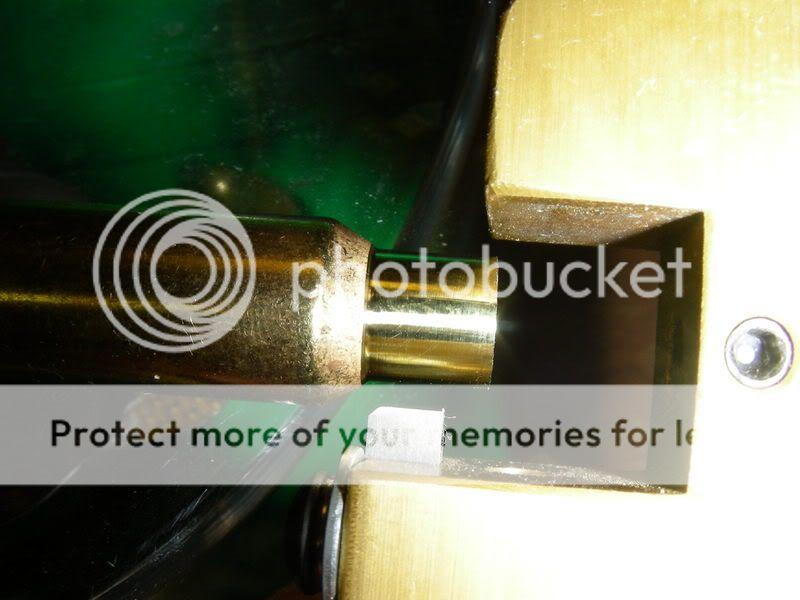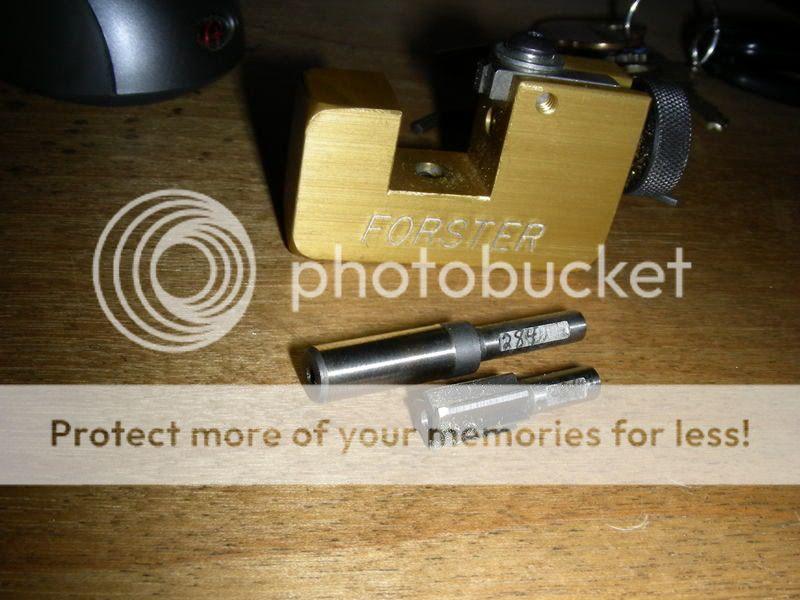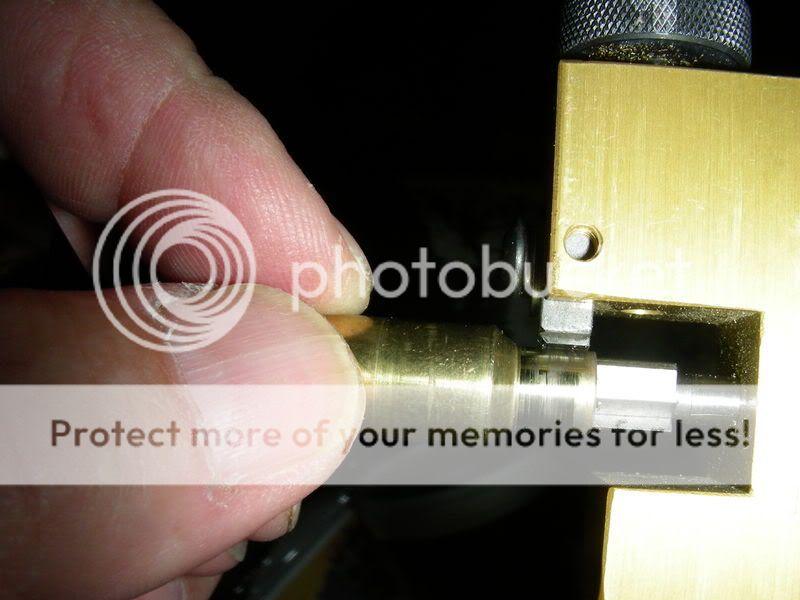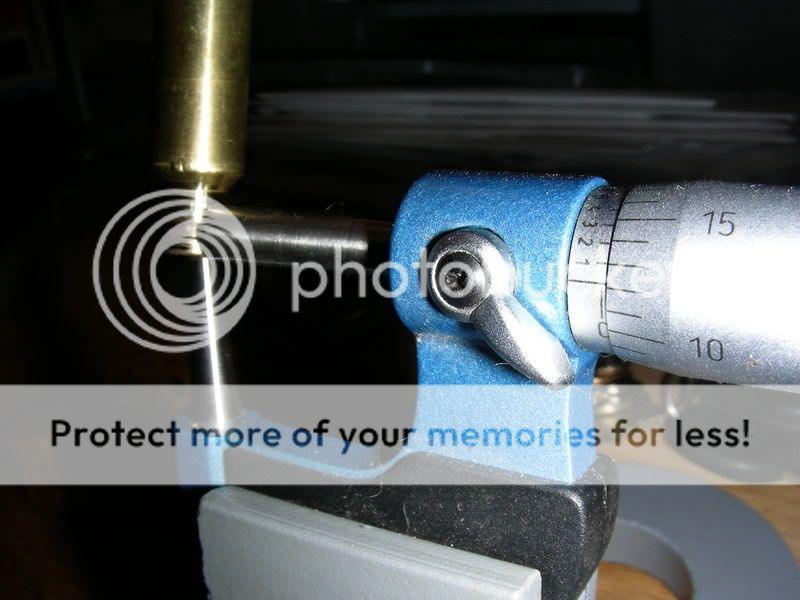gun)I've been turning outside necks with the Forster neck turning tool. Is there a better tool to turn necks with? I'm looking at switching to one of the Sinclair tools as I have found any thing with the Sinclair name on it to be very good. Thanks for any input.
You are using an out of date browser. It may not display this or other websites correctly.
You should upgrade or use an alternative browser.
You should upgrade or use an alternative browser.
neck turning tool
- Thread starter johnmyers
- Start date
 Help Support Long Range Hunting Forum
Help Support Long Range Hunting Forum
boomtube
Well-Known Member
A little more info would let us respond with a LOT more certainty.
First, Forster makes two, a hand held neck turner AND a case trimmer shaft mounted neck turner. Which are you using?
Then, what is your complaint, what is your turner NOT doing now?
Finally, tell us how you are using your present turner; perhaps you need to change your technique instead of your tool!
First, Forster makes two, a hand held neck turner AND a case trimmer shaft mounted neck turner. Which are you using?
Then, what is your complaint, what is your turner NOT doing now?
Finally, tell us how you are using your present turner; perhaps you need to change your technique instead of your tool!
I have the same tool. The one thing I do not like is difficulty getting the first time un-turned brass turned. The Forster collets fit extremely tight and it is a royal PIA to get them started. At first I thought I was doing something wrong. It was so bad I had to use case lube on the inside of the necks to force them on the collet. I was tempted to beat them onto the collet with a rubber mallet. I ruined one piece of brass using a pair of vice grips on the base trying to get one started. The instructions said to full length size the brass prior to turning the necks. My RCBS expander plug inside the FL die was not opening up the case mouth enough to allow the collet into the brass. Not sure what the solution is, I have not tried my turned brass since then. Perhaps that is just the price that is paid in getting it done the first time.
Sinclair advertizes a casehead holder that will chuck up in a drill motor. I am thinking that is the route to go with this neck tuner.
I suspect this is a common problem with all "hand held" neck turners.
Sinclair advertizes a casehead holder that will chuck up in a drill motor. I am thinking that is the route to go with this neck tuner.
I suspect this is a common problem with all "hand held" neck turners.
I stopped using the inside reamers years ago, when I discovered holding bullet tension was difficult.
Before neck turning, always use an expander. The Sinclair and K&M are both good. I have the K&M and can recommend it. With the case head holder chucked up in a small cordless drill, turning necks is a snap. Tip: Always lube the expander and turning mandrel frequently.
Before neck turning, always use an expander. The Sinclair and K&M are both good. I have the K&M and can recommend it. With the case head holder chucked up in a small cordless drill, turning necks is a snap. Tip: Always lube the expander and turning mandrel frequently.
The little HOT 100 from Forster is a good neck turner if your bit is parallel to the case neck. Some discussion here previously with bits that weren't straight. I trim cases first lightly to square off the end followed by a light inside chamfer. As said previously, using an expander is a MUST to "push" all the neck thickness variation to the outside to be turned off. A Sinclair cartridge holder on a cordless drill makes turning a snap. I just use low RPM and lube to avoid heat.
woods
Well-Known Member
I always size the neck first with a Lee Collet. The Lee Collets are noted for leaving the ID of the neck .001" to .002" below caliber and this is still a tight fit with the mandrel but that is what I want.
The Forster Hot 100 works well for what I want. It has a wide blade for a smooth cut

and the Forster reamers have the same shaft size

so that if you set your brass up in a tight chamber with .003" neck clearance you can use the reamer on the once fired brass along with the outside neck turner to trap the brass for a very consistant turn


The Forster Hot 100 works well for what I want. It has a wide blade for a smooth cut

and the Forster reamers have the same shaft size

so that if you set your brass up in a tight chamber with .003" neck clearance you can use the reamer on the once fired brass along with the outside neck turner to trap the brass for a very consistant turn


Forester
Well-Known Member
I have the same tool. The one thing I do not like is difficulty getting the first time un-turned brass turned. The Forster collets fit extremely tight and it is a royal PIA to get them started. At first I thought I was doing something wrong. It was so bad I had to use case lube on the inside of the necks to force them on the collet. I was tempted to beat them onto the collet with a rubber mallet. I ruined one piece of brass using a pair of vice grips on the base trying to get one started. The instructions said to full length size the brass prior to turning the necks. My RCBS expander plug inside the FL die was not opening up the case mouth enough to allow the collet into the brass. Not sure what the solution is, I have not tried my turned brass since then. Perhaps that is just the price that is paid in getting it done the first time.
Sinclair advertizes a casehead holder that will chuck up in a drill motor. I am thinking that is the route to go with this neck tuner.
I suspect this is a common problem with all "hand held" neck turners.
The problem you are having is common...if you skip a step. After your brass has been sized, it needs to be run over an expander mandrel. I like the Sinclair expander, they are a pretty good match to the Forster neck turning mandrels though you may have to turn off a half a thousandth or so to make things fit just right. A nice, not extremely tight interference fit is what you are after.
Kevin Thomas
Well-Known Member
Hey guys, this may or may not be needed, but since it was mentioned and I didn't see any clarification, I thought I'd chime in here for a moment. In re the comment about inside neck reaming, we're talking about something entirely different here. Inside neck reaming is done to increase clearance, and WILL NOT UNIFORM the brass, unless a very specific die and reamer are used in conjunction with one another. This isn't normally the situation, so it's most likely that if you had a concentricity problem before, now you just have a concentricity problem with thinner neck walls.
Inside neck reaming is a viable and useful operation, but it's best application is to reduce excessively thick necks that have resulted from necking cases down to a smaller caliber (30-06 down to 25-06, for example). Necessary at times, but for entirely different reasons.
Outside neck turning can be used to reduce neck thickness, but its primary purpose is to clean up those nasty concentricity problems. Two totally different animals, and they shouldn't be confused. Hope that helps,
Kevin Thomas
Lapua USA
Inside neck reaming is a viable and useful operation, but it's best application is to reduce excessively thick necks that have resulted from necking cases down to a smaller caliber (30-06 down to 25-06, for example). Necessary at times, but for entirely different reasons.
Outside neck turning can be used to reduce neck thickness, but its primary purpose is to clean up those nasty concentricity problems. Two totally different animals, and they shouldn't be confused. Hope that helps,
Kevin Thomas
Lapua USA
Kevin is correct; however, after inside reaming you will need to squeeze the outside of the necks down in order to get good tension on the bullet. This step is not necessary if you do not inside ream. I have a full set of inside reamers and have used them in the past, but no longer.
Get a good outside neck turning tool, follow the instructions and you will reduce neck thickness and improve concentricity. Also, get a sizer die which accomodates bushings to increase neck tension. Usuallly, a bushing about .002" or .003" less than loaded diameter will suffice.
Get a good outside neck turning tool, follow the instructions and you will reduce neck thickness and improve concentricity. Also, get a sizer die which accomodates bushings to increase neck tension. Usuallly, a bushing about .002" or .003" less than loaded diameter will suffice.
Mikecr
Well-Known Member
+1 Gene
Outside neck turning works just fine for me.
The only time I know of where inside reaming would be considered is for cartridges that form donuts after repeated firing/sizings. These are cartridges that require constant trimming, and none of mine do. But in this case, stretched brass is forced forward with FL resizings, causing shoulder brass to end up in the necks(donut). This again could be managed with outside turning, but I can imagine a neck-shoulder junction touch-up with an inside reamer would be far easier.
Outside neck turning works just fine for me.
The only time I know of where inside reaming would be considered is for cartridges that form donuts after repeated firing/sizings. These are cartridges that require constant trimming, and none of mine do. But in this case, stretched brass is forced forward with FL resizings, causing shoulder brass to end up in the necks(donut). This again could be managed with outside turning, but I can imagine a neck-shoulder junction touch-up with an inside reamer would be far easier.